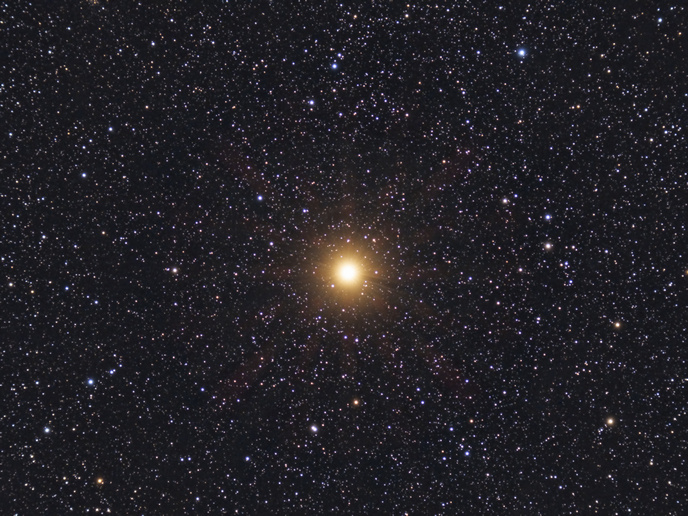Exploring episodic mass loss in massive stars
The evolution of massive stars revolves around their ability to strip layers of hydrogen from their outer layers – or envelopes. Sometimes these stars experience violent episodes of mass loss, during which they eject parts of their outer layers in irregular bursts. Such episodic mass loss can alter and shape the fate of massive stars, yet it is not currently understood. “Episodic mass loss in massive stars could be due to processes occurring in single stars at the end of their lives, when they become unstable, or to interactions of stars in binary systems, such as mass-transfer or mergers,” says Alceste Bonanos, research director at the National Observatory of Athens. In the ASSESS project, which was funded by the European Research Council, Bonanos and her colleagues investigated episodic mass-loss processes occurring in single stars, in particular massive stars in the red supergiant stage – the final stages of nuclear burning during which stars increase in luminosity and size. ASSESS touched on two explanations of these events from the literature: that high luminosities can drive violent eruptions which expel the outer layers of the star; or that pulsations in such stars can become very strong, removing the outer layers and driving a pre-supernova superwind during the last 1 000 years before it explodes. The project results can help us understand the evolution of the early universe, as supernova explosions provide the ‘seeds’ for black holes and enrich the interstellar medium to form the stars and galaxies we observe today. “It’s absolutely necessary to include the new mass-loss rates for red supergiants we derived, as well as episodic mass loss in stellar evolution codes of massive stars, in order to make reliable predictions about their final stages of evolution and the conditions under which they explode,” explains Bonanos.
Survey of evolved massive stars
The team conducted a survey of evolved massive stars, which involved sampling around 200 evolved stars, mainly consisting of red supergiants, using some of the largest telescopes in the world. The researchers found that 10-15 % of their red supergiants have substantial variability in their spectral types, which is evidence of episodic mass loss and provides an estimate on the occurrence rate.
Bringing machine learning to the stars
Using machine learning techniques, they developed a method to select evolved massive stars of interest more efficiently. “Such a methodology did not previously exist and is crucial for advancing our knowledge of episodic mass loss,” adds Bonanos, whose team is soon to publish the results of applying this technique to 1 million stars in about 25 nearby galaxies. They also measured precise and accurate mass-loss rates for the first time, using the largest ever sample of red supergiants in the Magellanic Clouds, paving the way to understanding the physics governing these extreme evolutionary states. They also discovered that WOH G64, a red supergiant in the Large Magellanic Cloud boasting the highest luminosity and mass-loss rate, underwent a never-seen-before transition to blue in 2013-2014.
Following the evolution of massive stars
Bonanos plans to investigate episodic mass loss during the red supergiant phase and in particular in extreme red supergiants, now that ASSESS has revealed how important this stage is in the evolution of a massive star. “I have applied for national funding here in Greece and hope to continue supporting a research team and to shed light on the phenomena occurring in these spectacular stars,” she says.
Keywords
ASSESS, episodic mass loss, massive stars, survey, evolution, machine learning







